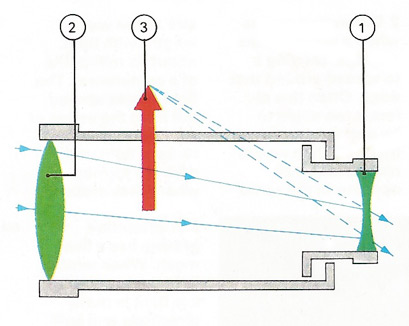binoculars

Binoculars use a combination of lenses and prisms.

Opera glasses have a pair of telescopes known as Galilean telescopes. The concave eyepiece lens [1] is placed inside the focus of the convex objective lens [2] to obtain a magnified upright image [3] of the object. The lenses have low-power magnification. Galileo discovered the moons of Jupiter using a similar instrument.
Binoculars are a pair of low-power telescopes or prismatic spotting scopes mounted together parallel for stereoscopic (three-dimensional), magnified viewing of distant scenes.
The opera glass employs Galilean telescopes and the field glass uses low-power nautical telescopes, but for greater magnifications, reflecting prisms and/or porro mirrors must be used to allow an objective lens of long focal length to be incorporated without making the instrument too long to be convenient to use.
The arrangement of the prisms in prismatic binoculars also allows the objectives to be set farther apart than the eyes of the user, thus allowing the stereoscopic effect to be enhanced. The separation of the eyepiece mountings and the focusing of the individual lens are adjustable in most models.
The common, incorrect usage, "a pair of binoculars," really means two sets of twin oculars, or four oculars.
Binoculars are specified by numbers such 10 × 50, the first of which gives the magnification and the second the aperture in mm. Good binoculars with a large aperture (50 mm or more) are a useful astronomical tool for comet-hunting and observing large star clusters and nebulae.


